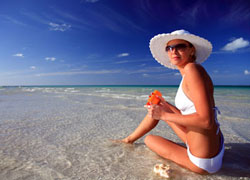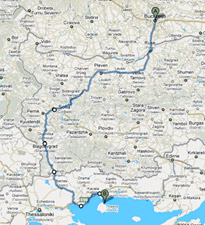Thassos Island - Geography
Regarding the ground morphology, the northern half is almost innacessible, with steep slopes and schistose ground . On the contrary, the southern part is quite flat and consists of argillaceous and calcareous rocks . These kind of rocks are of great importance for the entrapment of the waters and the creation of springs at the northern part, or the canalization towards the sea to the southern part.
The northern part has richer vegetation, thick forests reaching the sea and cultivations of olive treees and vineyards. Unlike this part, the southern part - despite the flat morphology - is poor in forests and cultivations and is mostly unproductive. Thassos is covered by thick forests of pine trees, fir trees, oak trees, and plane trees . Its forests occupy approximately the 9\10 of the island's surface , and olive trees grow all along its coastline. The pine-trees reach the seashores and their timber consists one of the main sources of income for the Thassians.
Thassos' underground is rich and the island was known from the ancient years for itsminerals . There is lead and silver in Limenaria, copper in Astris, iron in Kallirachi and the exquisite snow white marble, which is the whitest marble in the whole world.
Thassos belongs to Kavala Prefecture and consists of a single municipality with it's capital in Limenas and nine municipal departments . The main ports are Limenas andPrinos . The two main towns (administrative and commercial) are Limenas or Thassos(the capital) in the north of the island and Limenaria in the south.
















